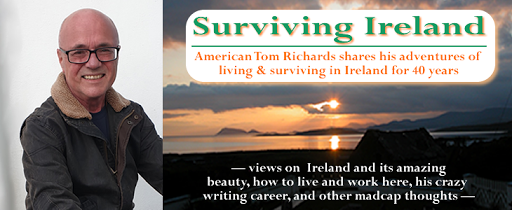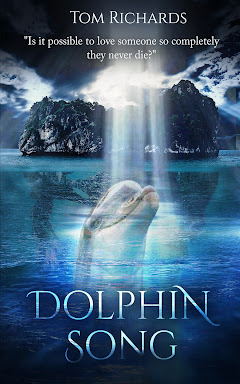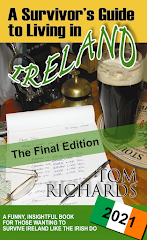First published on CNN, March 2014. For the original article go to http://ireport.cnn.com/docs/DOC-1107155.
As an American living in Ireland since 1982, I finally left the big smoke of the Dublin area to find a bit of serenity. It took awhile to locate, this amazing place. But I've decided to let you in on the secret: if you're looking for serenity in Ireland, as well as some absolutely wonderful vistas, you could do much worse than the Beara Peninsula and the tiny village of Eyeries County Cork.
Located 5 hours southwest of Dublin and only 2 hours from Cork International Airport, Beara is a hidden gem of solitude. One that many have never heard of.
What makes Beara Special?
It's a small place, is Beara. A rugged, isolated spot filled with mountains, sea, sky, and yes, Irish rain. Many have heard of County Kerry and the Dingle Peninsula. Or the other tourist spots like Killarney, the Cliffs of Moher, and Galway. Often these places are thronged with visitors. But few have heard of Beara and that's what makes it so special.
It's a small place, is Beara. A rugged, isolated spot filled with mountains, sea, sky, and yes, Irish rain. Many have heard of County Kerry and the Dingle Peninsula. Or the other tourist spots like Killarney, the Cliffs of Moher, and Galway. Often these places are thronged with visitors. But few have heard of Beara and that's what makes it so special.
I landed here just over three years ago, a guy intent on finding some peace and a little bit of friendship. What I found here has renewed my spirit with wonder.
I bought a small blue cottage in Eyeries, a little village of only 65 people. Whoops, make that 66 including me. It sits on the single main street populated by such houses all sporting different pastel colours - a rainbow of living spaces that brings the village to life. It's so pretty that Bord Failte, the Irish tourist board, often showcases it as an example of Irish village life.
There's not much in Eyeries, to be frank. The houses as mentioned, of course. A Post Office. A couple of shops. The church. Two pubs (how could we ever not have a pub?) that welcome visitors with some of the best pints of Guinness I've ever tasted in this country.
Then there are the people: the fishermen, farmers, artists, poets and writers who live here. All welcoming. Grousing about the weather as they greet me because it's been blowing a gale since late December with winds up to 100 mph. Rattling on about the dire economy over endless cups of tea or pints of Black. Or screaming my ear off as the Irish Rugby team beats France by only two points in a squeaker to win the Six Nations Cup. (Oh we were so delighted to get one over on the English this time!)
It's a small wondrous tapestry, is this part of the world. And what glitters most in this lost corner of Ireland is the scenery. The blue house I live in might not look much from the main street. But come inside and it's a different matter and you'll soon learn why I fell in love with the place.
Walk through the living room and into the back room. A picture window frames an amazing vista: that's Coulaugh Bay just in front of you. The Wild Atlantic beyond. Scarrif Island is the big one that flounders in the distance, looking like a restless whale. To the right, the mountains of Kerry wander down to the sea.
Walk out the back door if you care to. The wind blows and from the back deck you'll hear gulls cry and billowing waves crash onto the rocks a quarter of a mile away and a hundred feet below. If the sun is shining - a rare enough event - the Bay glitters as if St Patrick had dusted it with glinting silver coins. Or on bad days, sit and watch as the seas roar in, their throaty welcome seeming to shake the house even from this far away; their wild confusion both breathtaking and frightening. It's on days like this that I'm glad I'm not a fisherman, working a half-decker to catch my quota of mackerel, but instead sipping tea inside the warmth of the house.
And beyond Eyeries lies the balance of the Peninsula pointing like a westerly finger into the Atlantic. There's Allihies at its western most point, a small village made famous by its copper mines. When the mines closed a hundred years ago, the miners picked up and settled in Butte, Montana giving that locality a decidedly Irish flare. Drive on down to visit the museum and rest yourself on the soft sands of the village's wonderful beach. When you're finihsed sunning yourself, drive east to the town of Castletownbere, one of the largest fishing harbors in Ireland. During WW I, and just off the coast, the British hid their entire Atlantic Fleet from prowling U-Boats, so deep is that part of the Bay.
Then keep driving east along the northerly coast of Bantry Bay. The Slieve Mishkish Mountains, the spine of Beara Peninsula, accompany you all the way, their bald sheer cliffs painted green and yellow in summer with blooming heather.
And you're then in Glengarriff, home until recently of actress Maureen O'Hara of The Quiet Man fame. It's during this drive that you can look back at the serenity of it all, knowing that only three thousand other human beings call Beara their home. And that you, lucky person, have left the maddening tourist trail to discover the beauty of this area for yourself.
The Beara Peninsula is a hidden gem buried deep within the wilderness of Ireland's Wild West. Few seem to know about it, not even the Irish. We'd like to keep it that way, of course. But if you, like me, require a much needed rest; long for some tranquility; want to get off the tourist trail to experience vistas that are some of the best in all of Ireland, I'm sure that the welcoming people of Beara will let you stay. Why wouldn't they? They let me stay, after all. I'm sure they'll extend you the same welcome.
For more on Eyeries and the Beara Peninsula, go to http://www.eyeries.ie. And for more stories about one Yank's adventures of learning to live and survive in Ireland, go to http://survivingireland.blogspot.com.
Happy Saint Patrick's Day to all and I'll hoist a few for all CNN viewers. In fact, that's what I'll do right now!
My very best - Tom
A Survivor's Guide to Living in Ireland 2014 Kindle Edition Available Now
Want to learn more about living in Ireland? Are you thinking of traveling to Ireland or moving to Ireland? If so, you might consider the purchase of the 2014 Kindle ebook edition of A Survivor's Guide to Living in Ireland. Now 80,000+ words long, and having sold over 10,000 copies in its various editions, it could make the perfect gift for those interested in this wonderful country. Simply click on any of the links above to purchase this new Kindle version. You can also download various free aps to read this Kindle version on any PC or Mac.





No comments:
Post a Comment